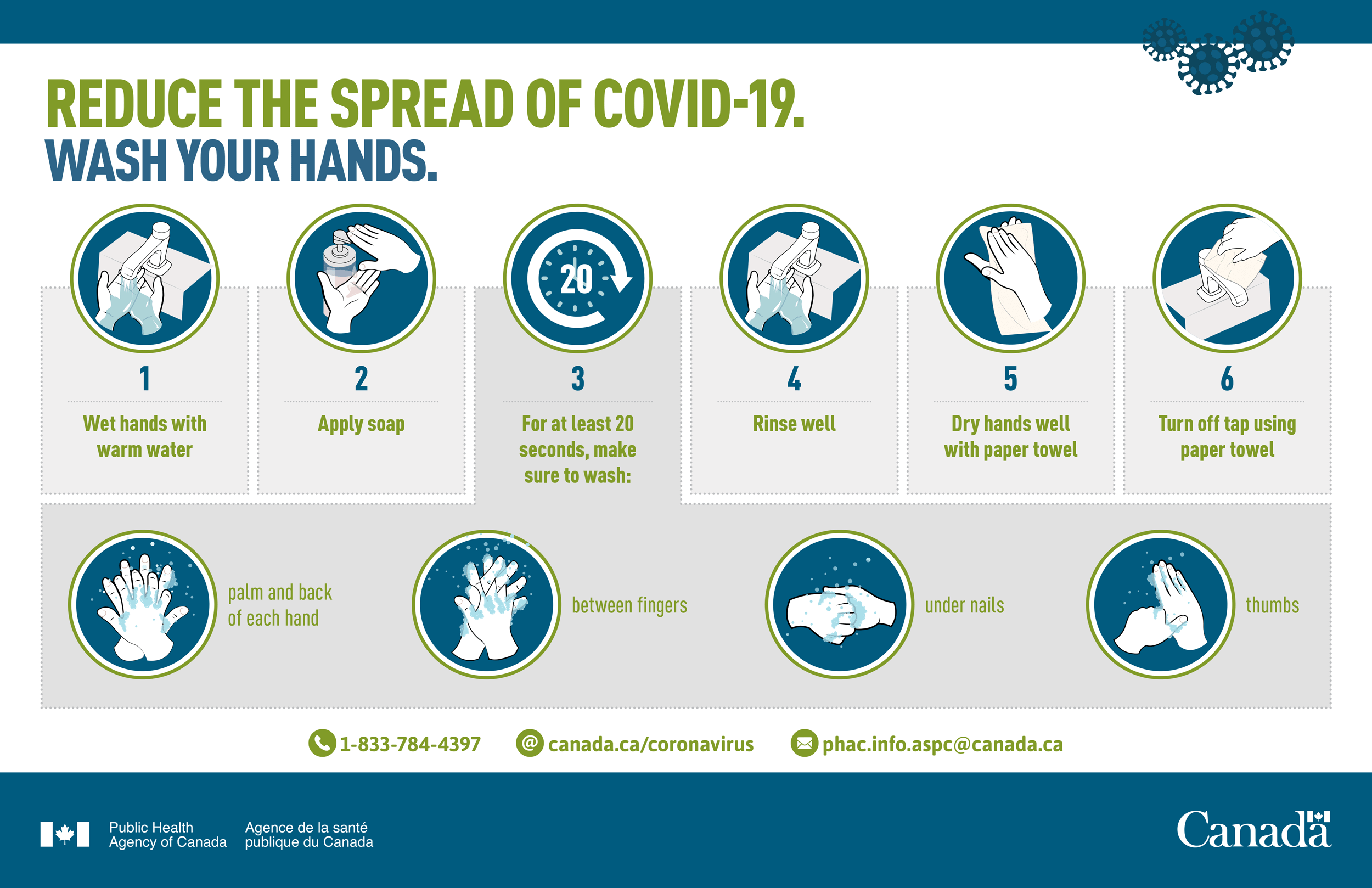Prepared by Kevin Prevost
Safety coordinator, Redekop Development Corp
Updated 08/07/2020
COVID-19 is the infectious disease caused by the most recently discovered Coronavirus. This new virus and disease were unknown before the outbreak began in Wuhan, China, in December 2019. The most common symptoms of COVID-19 are fever, tiredness, and dry cough. Some patients may have aches and pains, nasal congestion, runny nose, sore throat or diarrhea. These symptoms are usually mild and begin gradually. Some people become infected but don't develop any symptoms and don't feel unwell. Most people (about 80%) recover from the disease without needing special treatment. Around 1 out of every 6 people who gets COVID-19 becomes seriously ill and develops difficulty breathing. Older people, and those with underlying medical problems like high blood pressure, heart problems or diabetes, are more likely to develop serious illness. People with fever, cough and difficulty breathing should seek medical attention.
This exposure control plan (ECP) has been prepared to identify and describe Redekop Development Corp’s staff and Sub-trades control measures to help protect workers from potential hazardous exposure of Covid- 19. The scope of work covered within this plan is varied by all workers on the construction site however the control measures should be applied by all workers on the site without modification unless absolutely necessary. If modification of any kind is required, please consult Redekop Development Corp’s Safety Coordinator for verification of acceptable and effective modifications. We are committed to make every effort to:
| Risk of Exposure to Covid-19 | Low Risk | Moderate Risk | Moderate to High Risk | High Risk |
| Workers who typically have no contact with people infected with COVID-19. | Workers who may be exposed to infected people occasionally in relatively large, well ventilated workspaces. | Workers who may be working within 2m of infected people occasionally. | Workers who may have contact with infected patients or with infected people in small, poorly ventilated workspaces. | |
| Recommended controls | ||||
| Hand Hygiene | Yes, washing with soap and water for at least twenty (20) seconds, or using hand wipes that contain effective disinfectant. | Yes, washing with soap and water for at least twenty (20) seconds, or using hand wipes that contain effective disinfectant. | Yes, washing with soap and water for at least twenty (20) seconds, or using hand wipes that contain effective disinfectant. | Yes, washing with soap and water for at least twenty (20) seconds, or using hand wipes that contain effective disinfectant. |
| Physical Distancing | Yes, must always keep a minimum distance of two (2) meters from any person. | Yes, must always keep a minimum distance of two (2) meters from any person. | Yes, must always keep a minimum distance of two (2) meters from any person. | Yes, must always keep a minimum distance of two (2) meters from any person. |
| Eye Protection / Goggles or Face Shield | Not required. *Except for first-aid attendant performing first aid. |
Yes, use face shields when working within 2m of someone exhibiting symptoms. | Yes, when working in close proximity with COVID-19 patients. | Yes, when working directly with COVID-19 patients. |
| Airway Protection / Respirators | Not required. *Except for first-aid attendant performing first aid. |
Not required unless likely to be exposed to coughing and sneezing COVID-19 patients. | Yes, when working in close proximity with coughing and sneezing COVID-19 patients. | Yes (minimum N95 respirator or equivalent). |
| Cough / Sneeze Etiquette |
Workers/clients are expected to follow cough/sneeze etiquette, which is a combination of measures that minimizes the transmission of COVID-19 via droplet or airborne routes. Cough/sneeze etiquette includes the following components:
|
|||
| Hand Washing Procedure |

|
|||
Mitigate risks from exposure to high-touch surfaces (i.e., frequently touched by others).
Mitigate risks from exposure to high-touch surfaces (i.e., frequently touched by others).
Workers who are showing symptoms on site are expected to:
If any worker has become exposed to a person confirmed to have Covid-19 or suspected to have Covid- 19, they must report this to the site safety officer on site.
If any worker has travelled outside of Canada within the last 14 days they must report this to Site safety officer or safety coordinator immediately and will be required to remain away from the jobsite for a minimum of 14 days.
This ECP will be reviewed daily by the Safety coordinator or Safety officer throughout the pandemic. The reviews will be recorded on the table below and a brief summery on any changes will be noted.
If any worker has travelled outside of Canada within the last 14 days they must report this to Site safety officer or safety coordinator immediately and will be required to remain away from the jobsite for a minimum of 14 days.
| Date: | Reviewed By: | Summary of Changes: |